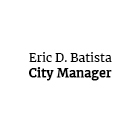Public Safety Advisory - Potential Roof Collapses Because of Heavy Snow
For Immediate Release:
2/4/2011 2:13 pm
Worcester, MA (February 4, 2011) - Recognize the Warning Signs for Potential Roof Collapses
We are urging homeowners, tenants and business owners to know the warning signs of a potential structural weakness. If you notice any of these signs, evacuate and contact 911.
How to Recognize Problems with Roofs:
-
Sagging roofs
-
Severe roof leaks
-
Cracked or split wood members
-
Bends or ripples in supports
-
Cracks in walls or masonry
-
Sheared off screws from steel frames
-
Sprinkler heads that have dropped down below ceiling tiles
-
Doors that pop open
-
Doors or windows that are difficult to open
-
Bowed utility pipes or conduit attached at ceiling
-
Creaking, cracking or popping sounds
How to Recognize Problems with Roofs in Commercial Buildings:
-
Many of the same apply – added;
-
Sagging roof steel – visually deformed
-
Severe roof leaks
-
Cracked or split wood members
-
Bends or ripples in metal supports
-
Cracks in walls or masonry
-
Cracks in welds of steel construction
-
Sheared off screws from steel frames
-
Sprinkler heads pushed down below ceiling tiles
-
Water puddles where it never has before
-
Doors that pop open
-
Doors or windows that are difficult to open
-
Bowed utility pipes or conduit attached at ceiling
-
Creaking, cracking or popping sounds
How to Minimize The Risk of a Roof Collapse
If you have questions or concerns, you can call the City's DPW Customer Service Center at (508) 929-1300 to speak with an inspector.
DO's (Tips for Homeowners for Removing Snow and Ice from Roofs and Other Areas):
-
Use a snow rake for pitched roofs (available at most hardware stores) to remove snow from your roof.
-
Start from the edge and work your way into the roof.
-
Try to shave the snow down to a 2 or 3 inches on the roof instead of scraping the roof clean, which will risk damage to your shingles or other roof covering.
-
Keep in mind that any metal tool could conduct electricity if it touches a power line.
-
Also, metal tools will do more damage to your roof.
-
Shovel snow from flat roofs throwing the snow over the side away from the building.
-
Most plastic shovels are better, except for the ones with curved blades—those too will do some damage to your roof.
-
Remove large icicles carefully if they're hanging over doorways and walkways. Consider knocking down icicles through windows using a broom stick.
-
Wear protective headgear and goggles when performing any of these tasks.
-
Consider hiring professionals to do the job. The combination of heights plus ice makes this one of the more dangerous house chores.
-
If you don't hire professionals, at least have someone outside with you in case anything does go wrong.
-
Keep gutters, and drains clean, free of ice and snow and keep downspouts clean at ground level.
DON'T's:
-
Unless approved by a registered professional engineer, don't add your weight or the weight of equipment to the roof.
-
Don't use a ladder since ice tends to build up on both the rungs of the ladder and the soles of your boots.
-
Don't use electric heating devices like hair dryers or heat guns to remove snow and ice.
-
Don't use open-flame devices to remove snow and ice.
Other Safety Tips:
-
Make sure your smoke alarms and carbon monoxide detectors are working.
-
Check your outside fuel and dryer exhaust vents, making sure that they are not obstructed by snow or ice. Never use cooking equipment intended for outside use indoors as a heat source or cooking device. Never use your oven for heat.
-
Clear snow away from furnace and dryer exhaust vents to prevent carbon monoxide poisoning.
-
Space heaters need space, so use them in a 3-foot circle of safety; free of anything that catch fire. Space heaters are not designed to replace your central heating system; they are only designed to provide a little extra heat on a temporary basis. So be sure to turn them off when you leave room or go to bed at night.
-
Clear snow away from downspouts so water has a place to go.
-
Do not be tempted to use a heat gun or open flame torch to melt the ice; the risk of starting a fire is huge.
-
If you feel you are in immediate danger, get outside and call 911.


